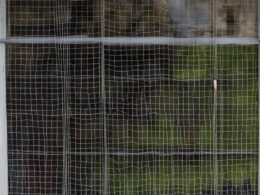Are you looking to achieve a beautifully manicured lawn? One key aspect of lawn care that you shouldn’t overlook is weed eating. Also known as string trimming or weed whacking, weed eating involves cutting down grass and weeds in areas where a lawnmower can’t reach. By incorporating weed eating into your lawn maintenance routine, you can ensure that your yard looks well-groomed and pristine.
In this section, we will provide you with essential lawn care tips regarding weed eating. We’ll cover everything from the meaning and importance of weed eating to the right tools to use, proper techniques, and important safety considerations. Whether you’re a seasoned gardener or a beginner, these tips will help you achieve professional-level results and transform your lawn into a picture-perfect oasis.
When it comes to maintaining a beautiful lawn, weed eating plays a vital role. It allows you to tackle areas that your lawnmower can’t reach, such as around fences, trees, and flower beds. By following our expert advice and implementing the right strategies, you can ensure that your lawns are free from overgrown grass and weeds, resulting in a more aesthetically pleasing and well-maintained yard.
In the next section, we’ll dive into the topic of choosing the right tools for weed eating. Having the correct equipment is crucial to achieving professional results and making your lawn care tasks more manageable. From understanding the differences between various string trimmers to selecting the appropriate gear for your specific needs, we’ll provide you with all the guidance you need to equip yourself for success.
Choosing the Right Tools for Weed Eating
To achieve professional results with your weed eating, it is important to have the right tools. A string trimmer is the primary tool used for weed eating, and you will need to choose between different types and models. It is generally recommended to use a gas or propane-powered string trimmer for professional-level results, as they are more powerful than electric or battery-powered options. Additionally, the choice between a straight shaft and curved shaft trimmer depends on the size of your lawn and the type of work you need to do.
A straight shaft trimmer is more versatile and suitable for heavier work. It provides better reach and control, making it ideal for trimming hard-to-reach areas and tackling dense weeds. On the other hand, a curved shaft trimmer is more cost-effective and suitable for small lawns or light weed-eating needs. It offers better maneuverability and is easier to handle, making it a popular choice for homeowners.
The length of the string on your trimmer is also an important consideration. Professionals typically use a string length of around six inches, which provides optimal cutting and trimming performance. The length of the string determines how much area you can cover in a single pass, so it’s essential to choose a string length that matches your specific needs.
Proper Techniques for Weed Eating
Before you start weed eating your lawn, it is important to prepare and gear up properly. Follow these essential techniques to ensure an efficient and effective weed eating process.
Mow and Prepare
Begin by mowing your lawn and setting the mower blade at the proper height. This step is crucial as it will serve as a guide for how high you should weed eat around the perimeter and flower beds. By mowing first, you create a neat and consistent lawn that will complement your weed eating efforts.
Gear Up for Safety
Prioritize safety by wearing the right gear. Protect yourself from debris and flying debris by donning long sleeves, pants, gloves, safety glasses, and closed-toe shoes. Additionally, wearing ear protection is recommended to prevent hearing damage from the noise generated by the weed eater.
Trimming Techniques
When weed eating, hold the string trimmer parallel to the ground for general trimming. This technique ensures an even cut and maintains the uniformity of your lawn. For precise edging, hold the string trimmer perpendicular to the ground and walk along the edge, creating a clean boundary between the grass and paved surfaces.
As you move the trimmer back and forth in a sweeping motion, the cutting string will slice through the grass and weeds. Be cautious around trees and flower beds to avoid damaging the bark or delicate plants.
Edging like a Pro
Proper edging is essential to give your lawn a polished look. Flip the trimmer upside down and hold the line vertically along the edge. Walk along the edge, allowing the trimmer to cut through any overgrown grass or weeds. This technique creates a sharp and defined boundary between the grass and paved areas.
By following these proper trimming and edging techniques, you’ll be able to achieve professional-level results with your weed eating. Remember to stay safe and be mindful of your surroundings. Now you’re ready to transform your lawn into a well-maintained and eye-catching outdoor space.
Cleaning Up and Additional Uses for Weed Eaters
After weed eating, it is important to clean up any grass clippings and debris to give your lawn a professional finish. Use a blower or rake to gather and remove the clippings. However, did you know that grass clippings can actually benefit your lawn? Instead of discarding them, you can blow the small bits of grass clippings back into the lawn. These clippings not only act as a natural fertilizer but also provide nutrients that promote healthy grass growth.
Aside from cleaning up, weed eaters have additional uses beyond weed eating and edging. They are versatile tools that can tackle various lawn care tasks. For instance, if you have tall grass that is difficult to mow, you can use a weed eater to cut it down to a manageable height before mowing. Weed eaters are also ideal for reaching tight spots and corners where a lawnmower may struggle. Moreover, they can be used to trim and maintain grass along slopes and in ditches, where a lawnmower cannot operate effectively.
Furthermore, some weed eaters can be transformed into multi-purpose machines by attaching different rotating blades. With the right attachments, you can use your weed eater to handle heavier tasks such as cutting thick brush, small saplings, and even light tree pruning. This makes it a cost-effective option, eliminating the need for multiple specialized tools.
So, not only are weed eaters essential for clean up after weed eating, but they also provide additional benefits and broader utility beyond their primary purpose. They enable you to maintain a well-groomed lawn, tackle various lawn care tasks, and save money on extra equipment.
What Lawn Care Tips Can I Use to Ensure a Pet Friendly Environment for My Home?
When it comes to safe pet friendly lawn care, there are a few tips to keep in mind. Opt for natural fertilizers and avoid chemical pesticides to protect your pets from harmful toxins. Regularly clean up pet waste to prevent brown spots on the grass and maintain a clean outdoor environment for your furry friends.
Conclusion
In conclusion, taking care of your lawn involves more than just mowing. Weed eating is a crucial step that can elevate the look of your yard and provide professional results. By following the essential tips outlined in this article, you can ensure that your lawn care routine includes effective weed eating techniques.
Choosing the right tools, including a high-quality string trimmer, is key to achieving professional-level results. Whether you opt for a gas-powered trimmer for increased power or a curved shaft trimmer for smaller areas, selecting the right tool for your specific needs is essential.
Equally important are proper techniques, such as mowing the lawn first and wearing the necessary safety gear. Following correct trimming techniques and edging around flower beds and paved surfaces will give your lawn a clean and polished appearance.
Lastly, don’t forget the importance of cleaning up after weed eating. Properly disposing of grass clippings and debris ensures a tidy and well-maintained lawn.
With these essential tips in mind, you can achieve professional-level results in your lawn care routine. Transform your yard into a pristine and healthy space that reflects your dedication to maintaining a beautiful outdoor environment.










